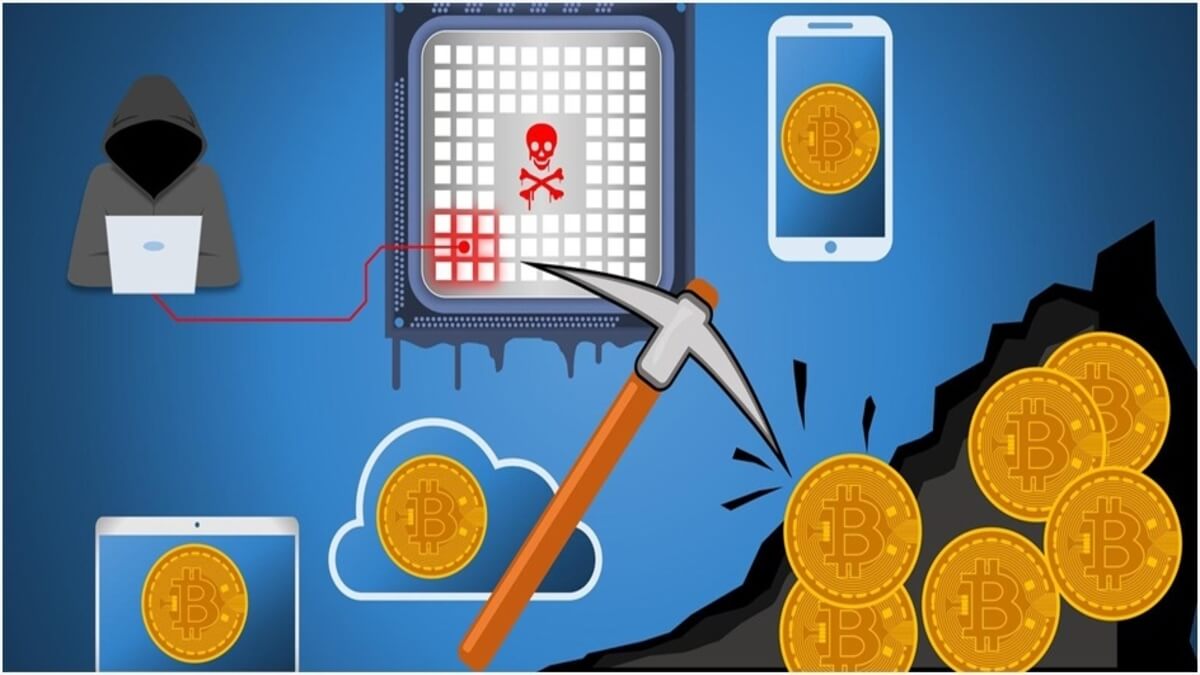
With the recent crypto crash, many people will be looking to take advantage of the low prices and jump on crypto coins before they inevitably rise again. Despite nearly halving in value all of a sudden, Bitcoin has been predicted to be the future of the financial world, and it’s also the leading crypto coin.
As we have seen, crypto is extremely volatile and you are taking a risk just by investing in it. To many investors, that risk is whether the coin will go down and lose value, which would result in them losing money. However, these are some other risks that you could be facing when it comes to cryptocurrencies, and you must learn about them.
Whether you’re an experienced investor or a newcomer looking to jump on the trends while the prices of crypto coins are at their lowest point in years, you need to be aware of cryptojacking. Cryptojacking can put you at risk, so you must understand what it is, how it works, and how you can keep yourself safe from it.
What is Cryptojacking?
To understand what cryptojacking is we first need to look into crypto-mining. If you’re mining any crypto coin you will be more at risk of becoming a victim of cryptojacking. However, you don’t even need to be actively involved in crypto-mining to fall victim to this form of cybercrime — cryptojacking can affect anyone, as we’ll see later on.
So what is crypto mining? Cryptocurrencies such as Bitcoin, Ethereum, and even some of the smaller coins such as Ripple are created through a process known as mining. Mining is done by using the processing power of a device’s CPU — anything from a smartphone to a laptop can be used to mine cryptocurrencies.
All crypto coins form part of something known as the “blockchain”. New coins are created on the blockchain when a device solves complex equations to verify transactions. As complex as it might sound, you can simply look at it as printing more money. Instead of a printing press, cryptocurrencies can multiply through devices all around the world.
You might be wondering why people would lend their processing power in order to solve complex equations to verify other people’s transactions. Cryptominers are rewarded in the form of a crypto coin, such as Bitcoin. When the transaction is completed, a small amount of Bitcoin will be given to the user, which means that you could leave your device on to mine crypto to make money for you.
This is where cryptojacking comes into play. Cryptojacking is when someone uses your device’s CPU and processing power to mine crypto for themselves. There are two main ways that cybercriminals can use your device’s processing power to illegally mine crypto for themselves.
- Hackers can inject a malicious cryptojacking script onto your device by using basic phishing techniques, for example, illegitimate links and malware.
- Cybercriminals can place a cryptojacking script onto a website, which will cause every device that visits the website to start crypto mining.
Cryptojacking is terrible for you, not only because someone is using your device to make money for themselves, but the act of mining crypto has a severe impact on your device — which we’re going to explore in more detail in the next section. Cryptojacking is also a huge invasion of privacy because you’ll have someone else on your device without your knowledge. There is always the possibility of them being able to steal your personal information or login credentials.
How do I know if I’m a Victim of Cryptojacking?
Detecting cryptojacking on your device is incredibly difficult. Hackers have become skilled at hiding themselves and disguising the signs of being on your device. This is especially true if you’re not aware of what cryptojacking is and how it can affect you. However, there are some details you can look out for to spot cryptojacking on your device:
- Slower hardware performance – crypto mining uses a lot of processing power which causes your device to become noticeably slower without good reason. However, a slow device is not necessarily a tell-tale sign of cryptojacking. Devices can slow down with age and they may also become slower because of other forms of malicious software such as viruses.
- Check your task manager – one of the dead giveaways that your device has fallen victim to cryptojacking is if there is another application running on your device. It’s not that simple though, hackers often hide their applications well. You can check your task manager to see if any hidden applications are running on your device, if there’s one that you don’t recognize, make sure to end the task immediately.
- Check your browser icon – some forms of cryptojacking will require the browser to stay open. The script or malware that has been installed on your device could force the browser open. Keep an eye on your taskbar to see if the browser stays open even after you have closed it.
- Check your electricity bill – crypto mining causes your device to work harder, and it requires your device to remain switched on. With the extra processing power required for cryptojacking, the device will be using much more electricity than usual. If you notice your electricity bill going up for no good reason, it could signify that your device has fallen victim to cryptojacking.
How to Prevent Cryptojacking
Even if you know what signs to look out for, it can be difficult to spot cryptojacking on your device. Therefore, it’s always a good idea to invest in a solid defense system before you fall victim to cryptojacking.
You need to make sure to invest in premium antivirus software. Antivirus software can scan your device for any malware, such as cryptojacking scripts for example, and the software can also remove them from your device. You should be on the lookout for antivirus software that can detect phishing scams and fraudulent links, as this will help you to avoid further cyberattacks.
Learn more from Crypto and read Crucial Points to Know if You Work With Cryptocurrency.




